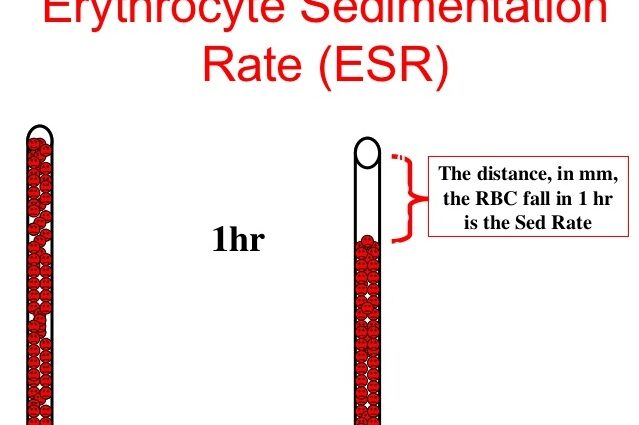Contents
Measurement of the sedimentation rate in the blood
Definition of sedimentation
La sedimentation rate is a test that measures the sedimentation rate, or free fall of red blood cells (red blood cells) in a blood sample left in an upright tube after one hour.
This speed depends on the concentration of protein in the blood. It varies in particular in the event ofinflammation, when the levels of inflammatory proteins, fibrinogen or even immunoglobulins increase. It is therefore generally used as a marker of inflammation.
Why measure the sedimentation rate?
This test is often ordered at the same time as thehemogram (or blood count). It is increasingly being replaced by tests such as the measurement of CRP or procalcitonin, which allow inflammation to be assessed more precisely.
The sedimentation rate can be calculated in several situations, in particular for:
- look for inflammation
- assess the level of activity of certain inflammatory rheumatic diseases such as rheumatoid arthritis
- detect an abnormality of immunoglobulins (hypergammaglobulinemia, monoclonal gammopathy)
- monitor progress or detect myeloma
- in case of nephrotic syndrome or chronic renal failure
This test is rapid, inexpensive but not very specific and it should no longer be systematically indicated in blood tests, according to the recommendations of the High Authority for Health in France.
Examination of the sedimentation rate
The examination is based on a simple blood sample, which is preferably done on an empty stomach. The sedimentation rate should be read one hour after collection.
What results can we expect from a measurement of the sedimentation rate?
The result is expressed in millimeters after one hour. The rate of sedimentation varies by sex (faster in women than in men) and age (faster in older individuals than in young people). It also increases during pregnancy and when taking certain estrogen-progestogen treatments.
After an hour, in general, the result should be less than 15 or 20 mm in young patients. After 65 years, it is generally less than 30 or 35 mm depending on the sex.
We can also have an approximation of the normal values, which should remain lower than:
– for men: VS = age in years / 2
– for women: VS = age (+10) / 2
When the sedimentation rate is greatly increased (around 100 mm per hour), the person may suffer:
- an infection,
- a malignant tumor or multiple myeloma,
- chronic kidney disease,
- inflammatory disease.
Other non-inflammatory conditions such as anemia or hypergammaglobulinemia (for example caused by HIV or hepatitis C) can also increase ESR.
On the contrary, a decrease in the sedimentation rate can be seen in the case of:
- hemolysis (abnormal destruction of red blood cells)
- hypofibrinemia (drop in fibrinogen levels),
- hypogammaglobulinémie,
- polycythemia (which prevents sedimentation)
- taking certain anti-inflammatory drugs in high doses
- etc.
In cases where the sedimentation rate is moderately high, for example between 20 and 40 mm / h, the test being not very specific, it is difficult to confirm the presence of inflammation. Other tests such as CRP and fibrinogen testing will probably be necessary.
Read also : Learn more about kidney disease |










